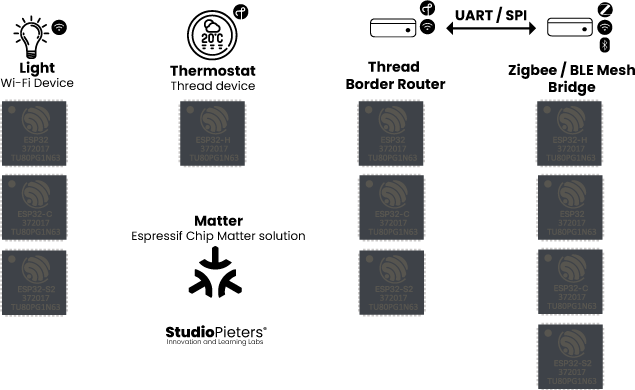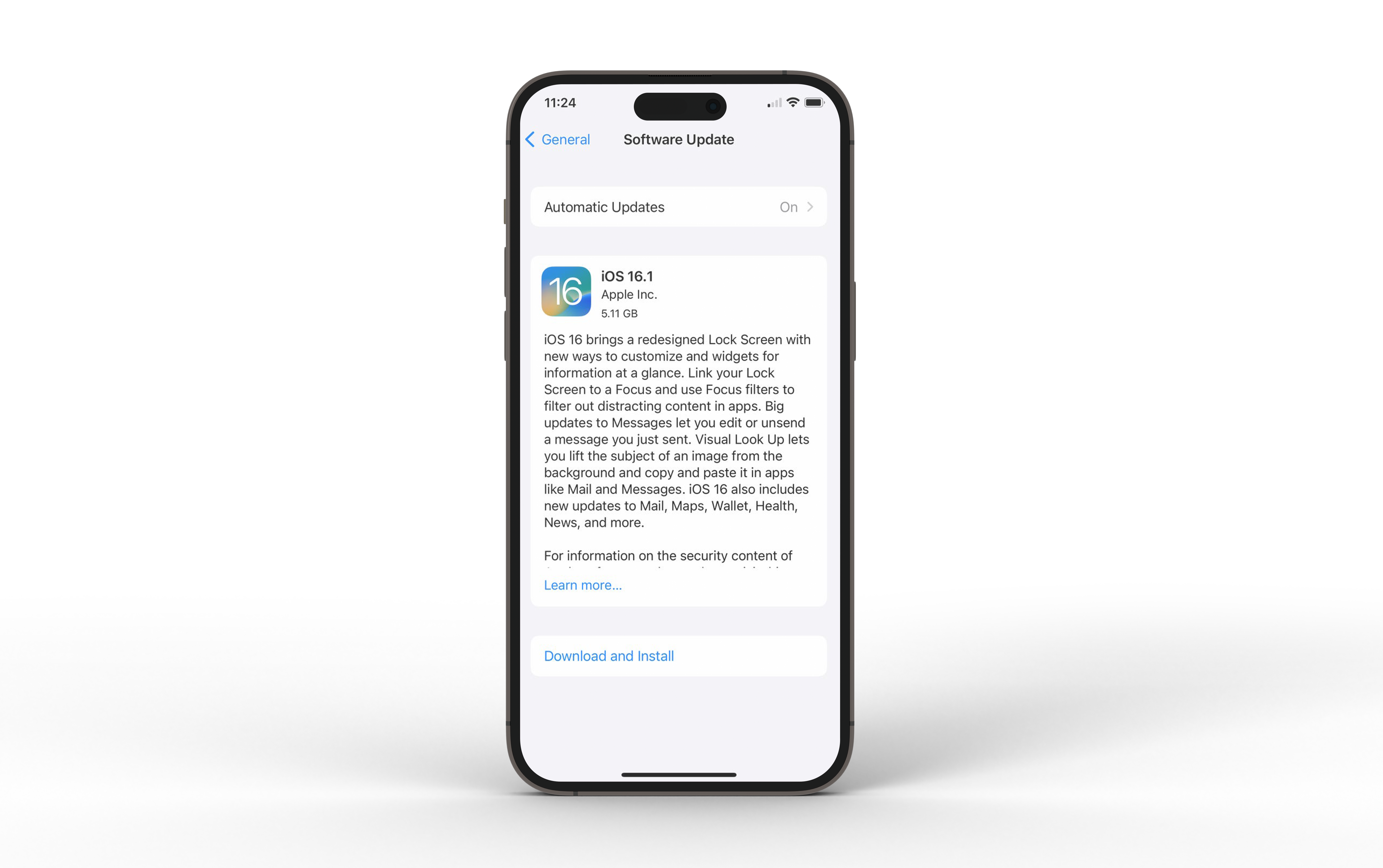Matter, previously project CHIP, is the new foundation for connected things. Guided by the Connectivity Standards Alliance, and developed through collaboration amongst all the leaders of the IoT industry, Matter focuses on building connected devices that are secure, reliable, and importantly, seamless to use.

Espressif has been a part of the Matter initiative since early days, and they have been focusing on making it easy to develop and use Matter with Espressif’s line of SoCs. In this article, we will discuss the steps to get your first Matter application up and running on an ESP32. In upcoming blogs, we will discuss various technical details of Matter and explore ways to quickly build Matter certified devices.

Matter support (from iOS 16.1)
It’s been a long time coming, but Matter is now officially coming to iOS. With Matter you can connect more (types of) accessories with each other in a reliable and fast way. Matter also works on platforms other than Apple’s, as long as the developer builds in support. If an accessory works with Matter, it does not have to build in support for Apple, Google, and Alexa separately. It is available from iOS 16.1.

What is Thread, and how does it work?
Thread is a low-power mesh networking technology protocol designed to connect all the devices in your home, but that’s not what makes it interesting. What makes it fascinating is that The Thread Group is pushing a standard that solves some smart home problems. The Thread Group feels that it can be difficult to get devices to talk to each other, and that when they do talk, connections can be spotty and soak up battery life on mobile devices. Thread is therefore aimed at securely connecting devices without blowing through battery life.

Like Zigbee and Z-Wave, Thread can connect all your devices together in a giant mesh. Unlike Zigbee and Z-Wave, Thread doesn’t require a smart home hub to connect them; they just require a Thread border router. A Thread border router connects a Thread devices to other IP-based networks, such as Wi-Fi or Ethernet. The Apple HomePod Mini contains a Thread border router, as does the latest-gen Apple TV 4K.
From Amazon, you’ll find Thread border routers in the 4th-gen Echo smart speaker and all Wi-Fi 6 and up Eero mesh routers. Google has been building Thread radios into its devices for years and the likes of the Nest Hub Max smart display, 2nd-gen Nest Hub and the Google Nest Wifi mesh router all now act as border routers. Nanoleaf also has Thread border routers built into some of its smart light systems and we’re bound to see more devices become routers in the future. The good news is that, with the launch of Thread 1.3.0 in July 2022, Thread devices will work with any Thread border router, with no specific brand barriers.
The devices connect to each other without a single point of failure, which also means the network can “self-heal.” So if one device goes down or a connection becomes spotty, the network can adjust and carry on without breaking. Most importantly, Thread is interoperable by design. It uses open standards like IPv6 and a 6LoWPAN foundation. Translation: All your devices would be able to talk to each other, no matter the manufacturer.

Right now, when you’re trying to pool your smart home devices together into routines, you use services like HomeKit, IFTTT, Alexa, and Google Assistant. They essentially act as remotes that make it seem like your devices are working together seamlessly. Like when you say good night and your door locks and your lights turn off. Thread, on the other hand, would let your devices directly talk to each other. So your smart lights from Philips could talk to your from LG refrigerator without a hub or a service getting in the middle of it.
It also uses AES encryption, which Thread Group says closes holes that are present in other networking protocols. It’s worth noting that Zigbee and Z-Wave also use AES encryption, though Thread also uses banking-class, public-key cryptography to back it up. As for how many devices you can use, a Thread network in your home can support over 250 devices with multiple hops. Then there’s energy use: Thread Group says Thread’s power efficiency means that devices running on AA batteries will last for years, as it runs on the power-efficient IEEE 802.15.4 MAC/PHY and uses short messaging between devices to conserve power.
The good news with Thread is that it’s a technology that can be enabled in some older devices using firmware; as long as devices support the 802.15.4 protocol, then they can be upgraded to support Thread.
